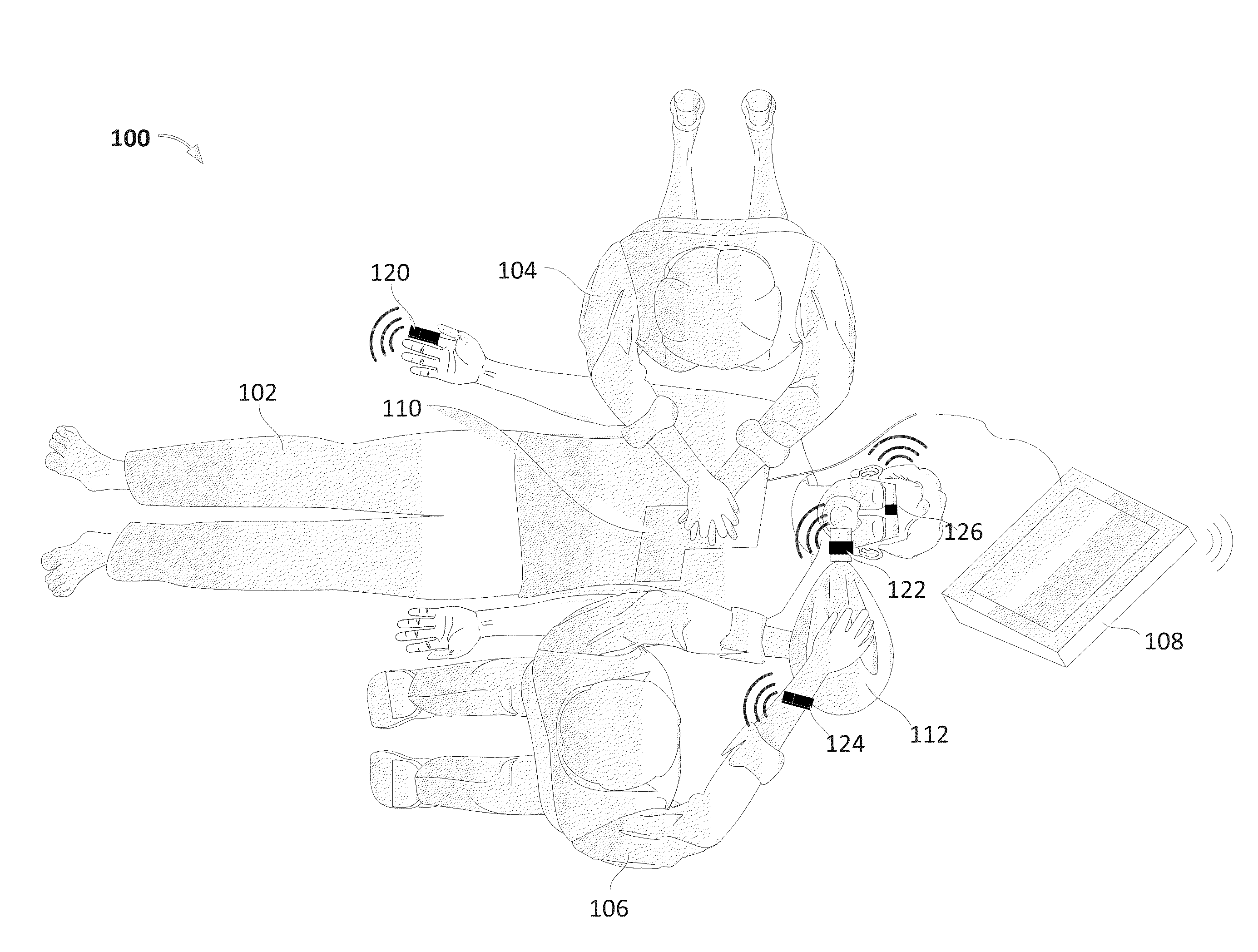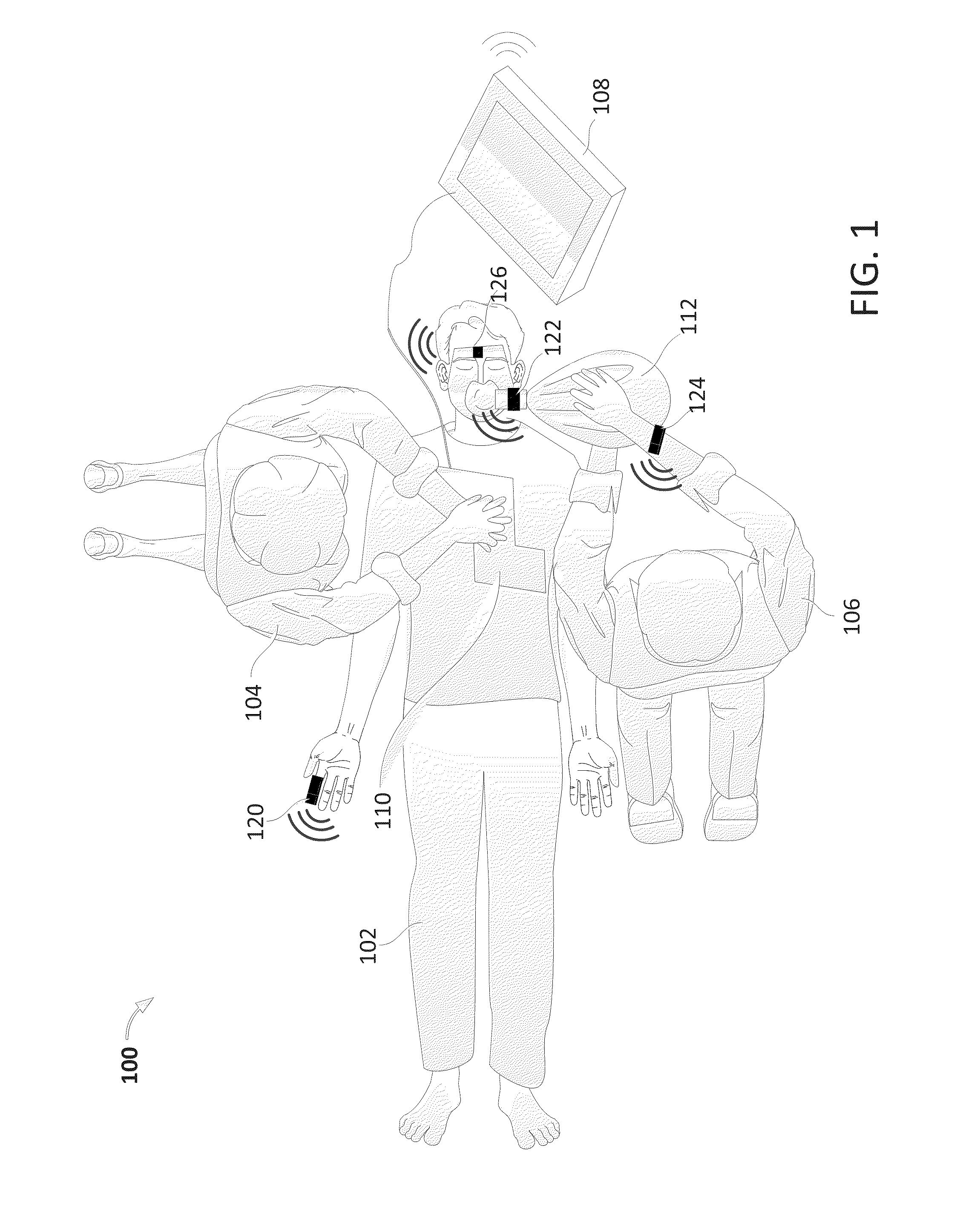Localized Monitoring
a monitoring and localization technology, applied in the field of localization monitoring, can solve problems such as sudden cardiac arrest, and achieve the effect of low power communication
- Summary
- Abstract
- Description
- Claims
- Application Information
AI Technical Summary
Benefits of technology
Problems solved by technology
Method used
Image
Examples
Embodiment Construction
[0036]Referring to FIG. 1, at a rescue scene 100, a caregiver 104 performs cardiopulmonary resuscitation (CPR) on a victim or patient 102 (the terms are used interchangeably here to indicate a person who is the subject of intended or actual CPR and related treatment, or other medical treatment), such as an individual who has apparently undergone sudden cardiac arrest. The caregiver 104 may be, for instance, a civilian responder with limited or no training in lifesaving techniques; a first responder, such as an emergency medical technician (EMT), police officer, or firefighter; or a medical professional, such as a physician or nurse. The caregiver 104 may be acting alone or may be acting with assistance from one or more other caregivers, such as a partner EMT 106.
[0037]In this illustration, the caregivers 104 and 106 can deploy a defibrillator (such as an automated external defibrillator (AED) 108, a professional defibrillator, or another type of defibrillating apparatus) and multipl...
PUM
 Login to View More
Login to View More Abstract
Description
Claims
Application Information
 Login to View More
Login to View More - Generate Ideas
- Intellectual Property
- Life Sciences
- Materials
- Tech Scout
- Unparalleled Data Quality
- Higher Quality Content
- 60% Fewer Hallucinations
Browse by: Latest US Patents, China's latest patents, Technical Efficacy Thesaurus, Application Domain, Technology Topic, Popular Technical Reports.
© 2025 PatSnap. All rights reserved.Legal|Privacy policy|Modern Slavery Act Transparency Statement|Sitemap|About US| Contact US: help@patsnap.com



